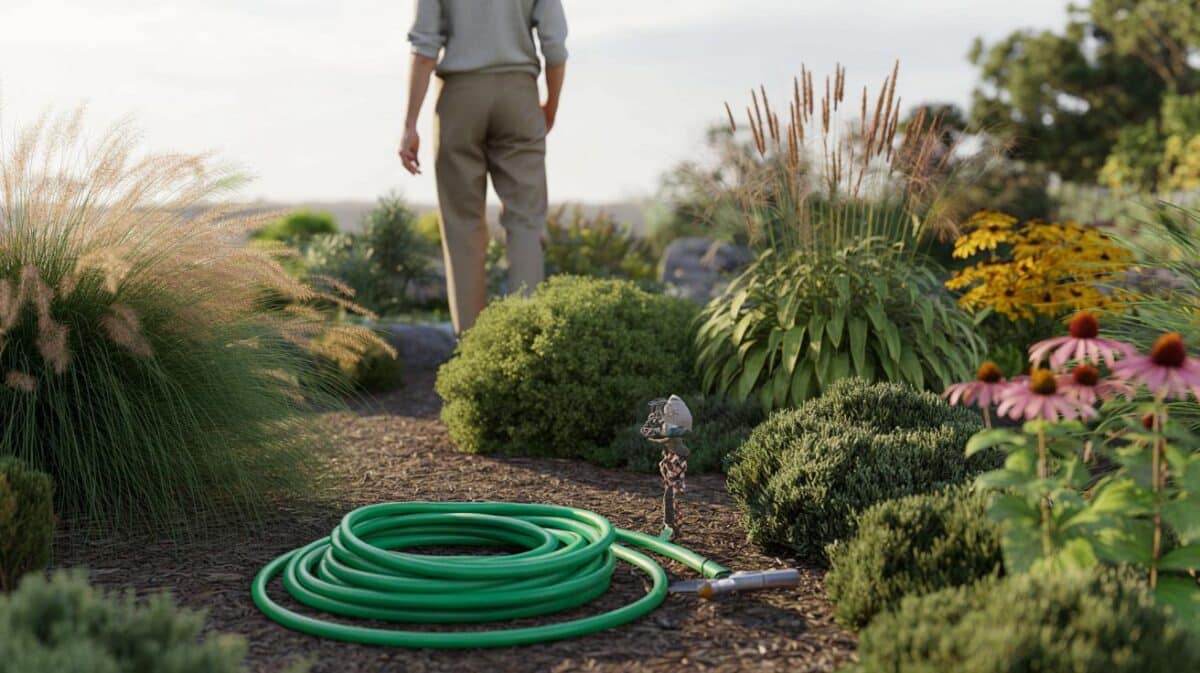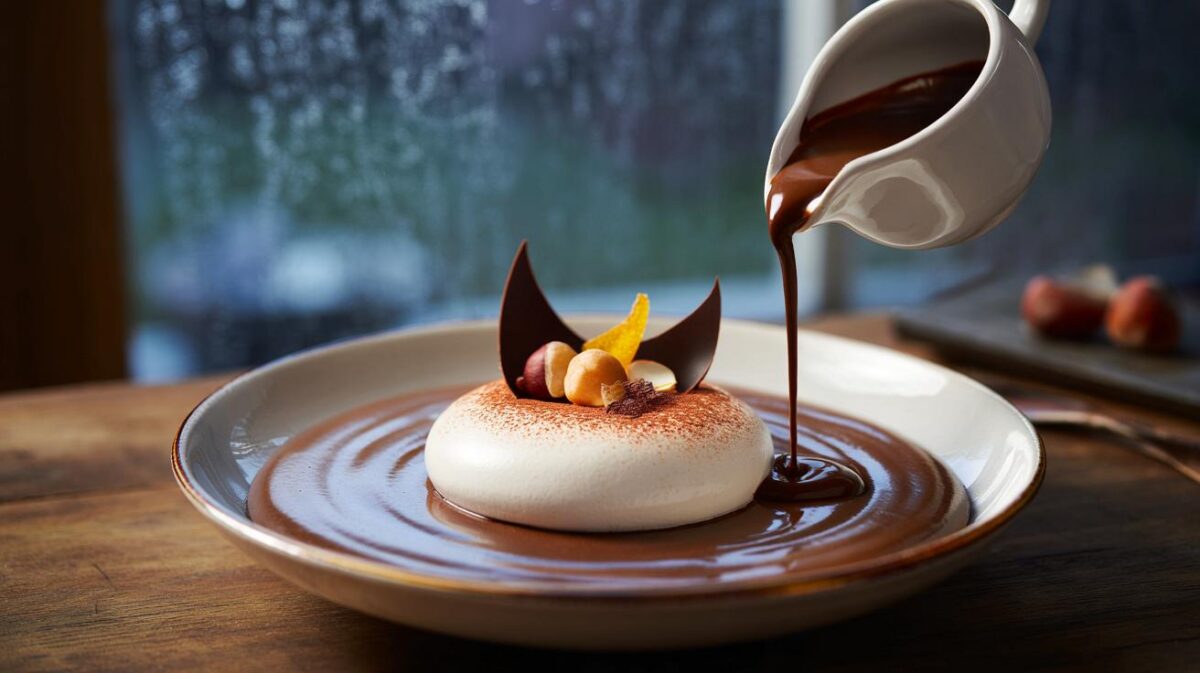Your routine, not the weather, often trips them up.
You can keep those sculpted petals and marbled leaves lively well into the first frosts. Tweak the way you water, lift drainage, and move pots a few feet, and the plants bounce back with stamina.
The autumn trap most gardeners fall into
Cooler days fool many people into watering more, not less. Rain, dew and shorter daylight reduce plant thirst. The compost stays wet for longer. Roots sit cold. The tuber suffocates. That is the fast lane to rot.
Let the top 2 cm of compost dry between drinks; in autumn that often means every 7–10 days.
When water pools on the surface, or the saucer holds a puddle, the tuber is in trouble. Leaves droop, stems collapse and a sour odour rises from the crown. Act at the first sign. Delay, and fungi move in.
Why cooler air means fewer waterings
At 10–15°C, transpiration slows and the pot holds moisture. A summer routine of daily sprinkles becomes risky. Cyclamen like bright shade and moving air, not warm, wet crowns. Water that soaks the heart of the plant feeds disease, not blooms.
Keep the crown dry: water into the saucer for 20 minutes, then pour away every drop.
The fail-safe trick that saves most plants
One change prevents the bulk of autumn losses: build a drainage platform under every cyclamen. It costs pennies, takes three minutes and outperforms guesswork.
Build a drainage platform in three minutes
- Add a 2 cm layer of clay pebbles or pea gravel to the base of the pot.
- Use a container with at least three holes; check they are clear, not clogged with roots.
- Slip a mesh or a shard over holes to stop compost washing out while keeping water moving.
- Stand the pot on feet or a grid so the base never sits flat on a cold slab.
- Water from below: fill the saucer, wait 15–20 minutes, then discard all surplus.
If water doesn’t drain through within 60 seconds, the mix is too dense—add grit and repot.
Choose the right container and mix
Pick a pot just 2–3 cm wider than the tuber. Oversized containers trap moisture and chill roots. Use a free-draining mix: one part peat-free compost, one part fine grit, one part bark or perlite works well. Work the tuber so its top sits slightly proud of the compost, not buried.
A simple moisture meter or your finger does the rest. Probe to knuckle depth. If it feels cool and damp, wait. If it feels dry and light, water from below with 150–200 ml and remove the excess.
Spot trouble early and fix it
Small warnings turn into losses when missed. Use this quick guide at the pot every week.
| Sign | Likely cause | What to do |
|---|---|---|
| Yellowing leaves from the base | Waterlogged compost, poor light | Move to bright shade; dry out; improve drainage layer |
| Floppy stems and a sour smell | Tuber rot, water on crown | Cut away mushy parts; repot in fresh, gritty mix; water only from below |
| Leaf edges crisping | Sun scorch or indoor heating | Shift to cooler site with soft light; keep away from radiators |
| Buds aborting before opening | Cold draughts plus wet compost | Shelter from driving rain; water less; add pot feet |
| Grey fuzz on spent petals | Botrytis (grey mould) | Remove debris fast; increase airflow; avoid wet foliage |
Weekly checks that prevent rot
- Deadhead by twisting stems cleanly at the base; do not snap mid-stem.
- Empty every saucer after watering; never leave pots standing in a film of water.
- Brush the compost surface to break crusts and let air reach roots.
- Feed lightly every three weeks with a balanced, low-nitrogen fertiliser.
Place your pots for colour that lasts
Think bright shade, no scorching midday sun, and a soft breeze. A north-east balcony or a window ledge sheltered by a hedge suits the plant. In borders, tuck cyclamen near evergreen companions that break wind without smothering the crown.
Target 10–15°C, bright but indirect light, and steady airflow—those three settings keep buds coming.
Indoors or outdoors
Florist cyclamen prefer a cool porch, an unheated room, or a draught-free step. Central heating dries them and shortens bloom time. Hardy types in the garden benefit from a light mulch that cushions early frost while keeping the crown exposed.
Simple gear that makes success easy
Small tools raise your strike rate without fuss. A long-spouted watering can lets you aim the flow into the saucer. A narrow hand fork loosens the top layer so water sinks evenly. A basic moisture meter removes guesswork on busy weeks. Raised planters with an overflow channel also cut errors, especially on rain-soaked patios.
Pro moves and mistakes to avoid
What trips people up
- Watering like it is July; autumn needs far fewer top-ups.
- Leaving the pot flush on cold stone; lift it for airflow beneath.
- Using a very wide container that holds chill and damp.
- Placing plants by a radiator or behind closed curtains overnight.
- Letting rain hammer the crown; set a small awning or shift under a table.
Routine that keeps blooms coming
Trim off every spent flower and damaged leaf. Feed little and often. Keep the crown dry. Space pots so leaves do not rub. If a week turns wet, skip watering altogether. If a cold snap bites, bring containers close to the house wall for a pocket of warmth.
Extra know-how for stronger displays
Choose types for your setting. Florist cyclamen suit containers and porches for intense colour. Hardy species like cyclamen hederifolium settle under deciduous shrubs and flower as leaves fall. Mix both to stretch the season from late summer into winter.
Watch for vine weevil in pots. Notched leaves point to adults; sudden collapse signals grubs eating roots. Tap out the rootball and check. Swap to fresh, gritty compost and consider biological controls when soil is warm enough for them to work.
If you like numbers, try a simple schedule. Water 150–200 ml from below every 8–10 days when days sit at 12–15°C. Feed at the third watering. On wet weeks, check the top 2 cm daily and hold off until dry. This pattern cuts waste by two to three litres a month per pot and keeps flowers forming in sequence.
Design extras pay off. A pale gravel mulch reflects light to the underside of leaves and keeps splashes off the crown. A twiggy windbreak curbs buffeting on high balconies. Grouping three pots together raises humidity slightly without drenching them. Each small change buys you another week of colour as the nights draw in.








